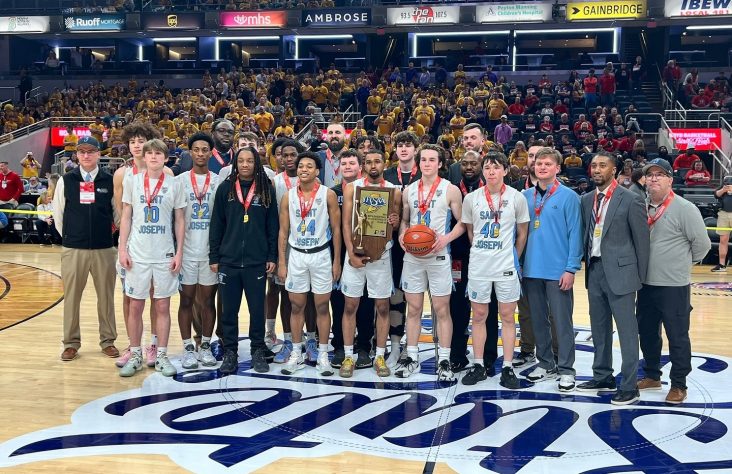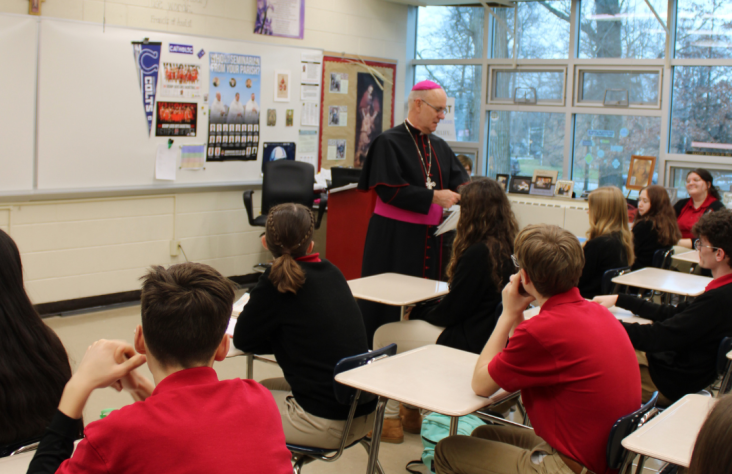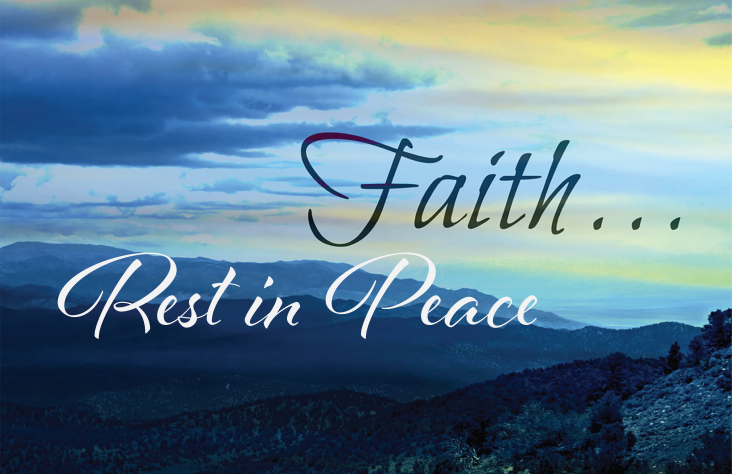January 28, 2021 // Diocese
Faith and resilience — Mitigation strategies provided framework for fall
The beginning of this school year looked a lot different than in years past. The pandemic made it difficult to return to the classroom, but pastors, administrators and staff were determined to be back to in-person classes by mid-August so they spent most of the summer planning and implementing new strategies for the 2020-2021 school year. Those strategies followed the guidelines set by the Diocese of Fort Wayne-South Bend Catholic Schools Office and were informed by local and state health departments to ensure that going back to the classroom would be safe for everyone involved.
In a statement made by the Catholic Schools Office July 31, schools that could maintain effective social distancing were encouraged to reopen for in-person classes. “Our faith is relational, incarnational and sacramental,” the statement said. “We learn best about accompaniment, abiding with Our Lord, and the importance of personal witness, when we are in-person. While some Catholic schools may be able to open with in-person classes due to the space in their building that allows for social distancing, other Catholic schools may need to begin with a hybrid or virtual model, and then move to in-person learning later.”
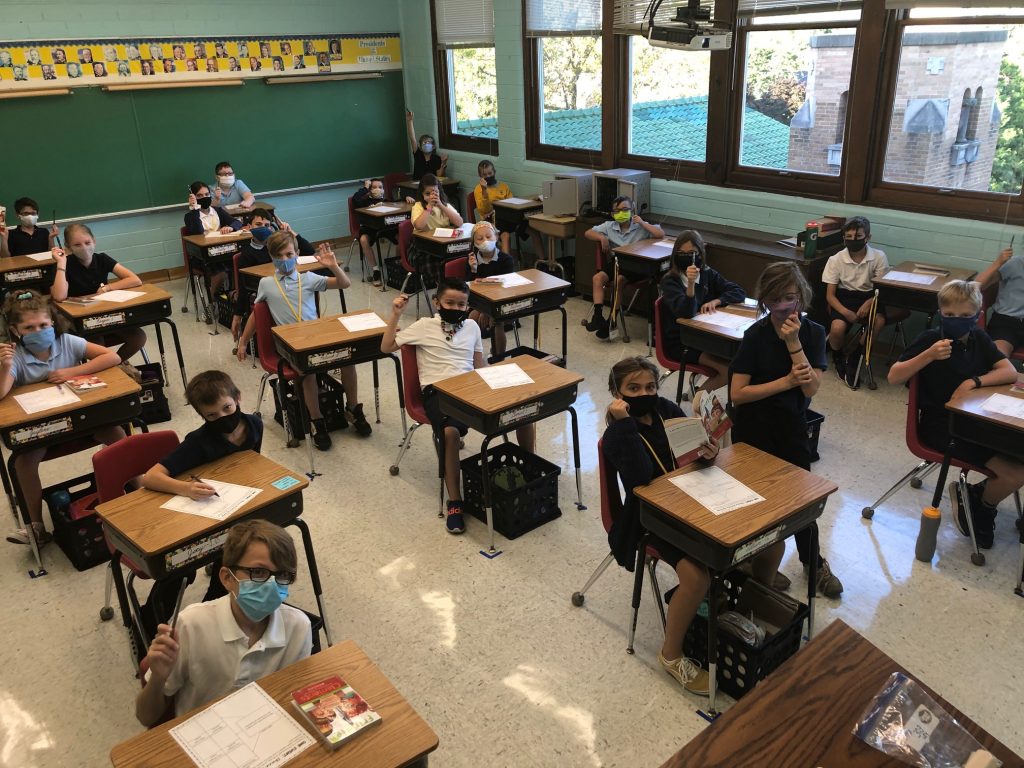
Photos provided by Mike Obergfell
Temperature checks, masks and social distancing are still the norm in schools across the diocese.
The statement went on to list approved reopening policies created by the Catholic Schools Office. Some of the policies included:
• Parents could have a choice between in-person learning or virtual courses for their children
• Schools needed to have a virtual transition strategy in place
• Faculty and students need to have their temperatures taken before entering the building and must stay home if ill
• Touch-point surfaces must be cleaned throughout the day, with more enhanced cleaning at night
At St. Jude School in Fort Wayne, principal Mike Obergfell and his faculty worked diligently to create such a safe learning environment. During the planning stages, Obergfell said, “We did a lot of reinventing ourselves. We planned to be open and in person but did not know what to expect.” There were many questions left unanswered in the beginning, such as: Would schools have to be shut down again, and at what point would that happen? How would they strategize going virtual again in an instant? And how would teachers work with students who were in quarantine to provide them the best instruction, so they did not fall behind?
Planning for safety was proven to be the most difficult task, but a creative one. At St. Jude, drop-off and pick-up procedures were revamped to maintain social distancing, students and staff ate lunch in their respective classrooms and recess was restricted to children only being able to play with their immediate classmates.
The Mass schedule was also tweaked so all grade levels could still attend on a weekly basis. Two grades would attend at a time, and the tradition of a weekly all-school Mass was set aside until it is safe to gather everyone together again.
To keep the school open, not only did the strategies need to be followed meticulously, but everyone also would need to be adaptable to make it work. Obergfell said his faculty and staff
“… have adapted and assumed additional duties and responsibilities to do what was needed.”
“I think everyone in the building is working overtime and pitching in to help us stay open.”
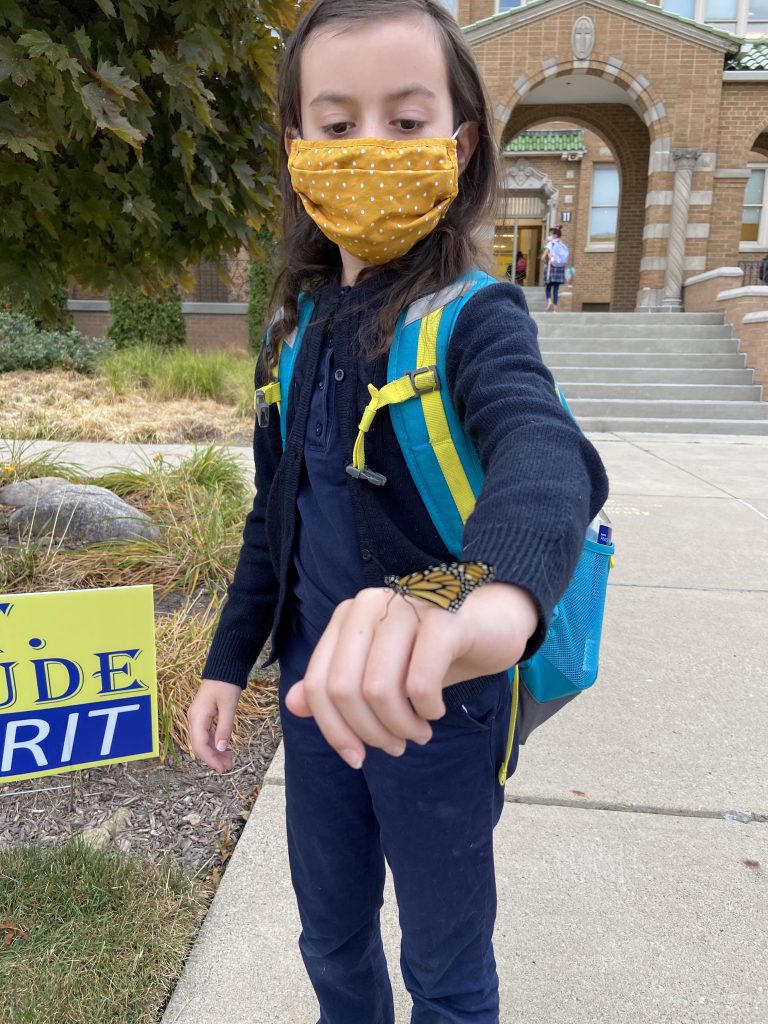
Students adapted and grew accustomed fairly quickly to the new way in which school days had to be approached, said Mike Obergfell, principal of St. Jude School, Fort Wayne.
Implementing the new strategies took a great deal of teamwork and cooperation when the school year began.
“Each grade level worked together to prepare for distance learning for their grade. The older grades did most of their work online and were well-prepared for the transition. The younger grades came up with plans for take home packets of information and parents could drive through to pick up other assignments or books from their child’s teacher. Communication was kept open and video lessons were sent to stay in touch with students and families,” said Obergfell.
Over Christmas break, the strategies were revisited to ensure they were going smoothly and to determine if any updates or changes were necessary. Fortunately for St. Jude, they were going well. By Christmas, the faculty hoped they would be able to open up a bit more. However, COVID-19 cases surged again, so it was not possible. First semester plans for a more complete return to normalcy were pushed into the spring semester.
The entire year was difficult. Administrators were sometimes given a moment’s notice that their school would be switching to a virtual learning or hybrid mode. At first, the uncertainties were only supposed to last a few weeks, but that stretched into a month and finally to the remainder of the year. But by working together, administrators and staff are effectively riding the rest of the 2020-2021 school year and instructing students to the best of their abilities. This camaraderie is what paved the way to strategize a way to keep students in the classroom in fall, and to keep everyone safe.
“Although this has been a very challenging time for all of us, the children have been so resilient and adaptive to the situation … I truly believe that we are learning a great lesson of our faith” said Obergfell.
The best news. Delivered to your inbox.
Subscribe to our mailing list today.

